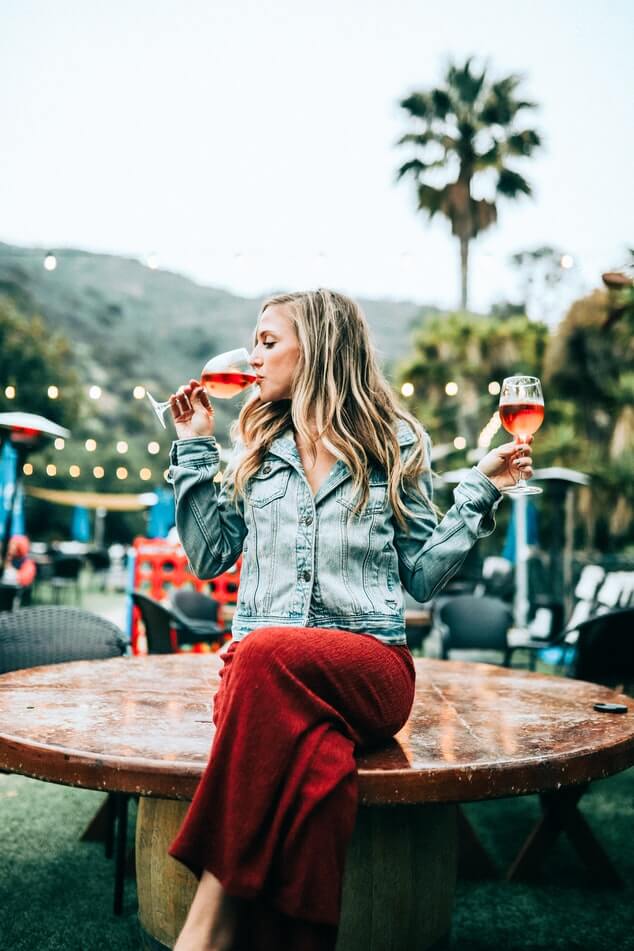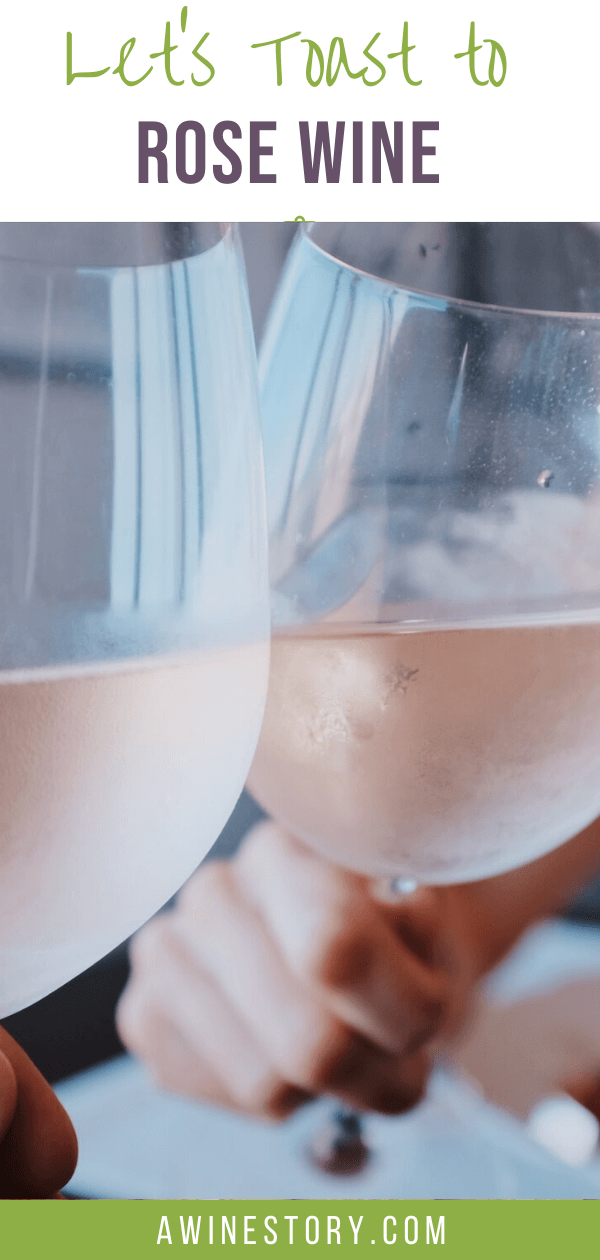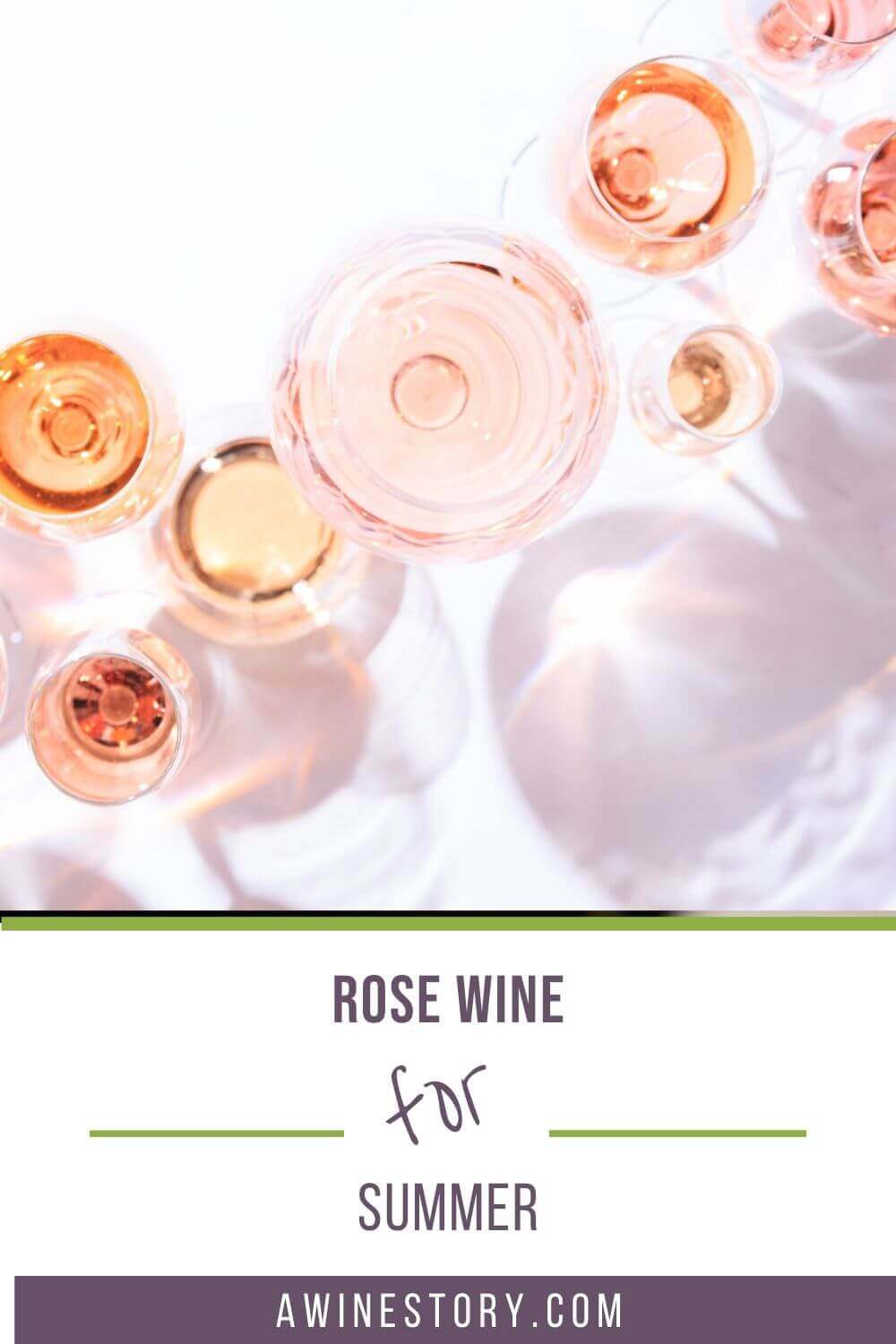Dry Rosé Wine

Imagine yourself at a popular cocktail bar. The bartender smiles and asks you what you’d like to drink.“Dry rosé wine” you say. You want a good rose wine.
The bartender smiles. “Yes. But what kind of dry rosé wine?”
If you’re like most people, you probably didn’t think that dry rosé wine had a type, kind, or style. It is just pink wine, right?
And especially so delicious in spring and summer.
Yet according to Jennifer Simonetti-Bryan, Master of Wine there are four key styles under the generic Rosé Wine category.
**Discover Wine Resources Here**
Dry Rosé Wine: Your Taste Preferences
Simonetti-Bryan is so enamored with Rosé Wine that she wrote a book on the subject, called Rosé Wine: The Guide to Drinking Pink.
In this book, Jennifer Simonetti-Bryan explains the four styles of dry rosé wine.
(Well, one style is almost dry).
These wine styles include the blush style, the fruity style, the rich style, and the crisp style.
The Blush Style of Dry Rosé Wine
If you love rosé wine with a touch of sweetness, join the crowd.
This is a delicious wine style that sells millions of bottles a year. Though it is great to sip during meals, it works even better as an apéritif.
An accident invented the blush style–in California, at least. In the 1970s a winemaker left the winery and returned later to find what we call a “stuck fermentation.”
**Click Here to Read the Original Guide to Your Personality Style on Forbes.com Here**
Are You Blushing Yet?
This means that after being put into a tank of crushed grapes, the yeasts did not eat all the sugar in the fruit. If the yeast finished their job, the sugar would be metabolized and the wine would be dry.
Instead, the yeast quit their job early, leaving some residual sugar in the wine. This isn’t quite a dry rosé wine.
They bottled the wine.
The sweet blush style became a runaway success.The sweet blush style became a runaway success.
California’s Sutter Home White Zinfandel started the trend. This wine was made from the red Zinfandel grape, but vinified in a “white wine method” so that the grape skins do not color the resulting wine red.
You may have heard about Mateus. This wine was popular in the 1970s and remains so today. It’s orangish, and the brand is famous for its squat shaped bottle. The grapes are indigenous to Portugal and include a majority of the Baga grape.
**Have You Read Jennifer’s other book, The One Minute WIne Manager?**
The Fruity Style of Dry Rosé Wine
Next to the blush style, many consumers enjoy a fruity rosé wine. You will taste a lot of ripe fruit in this wine–it’s like smelling a package of fresh picked strawberries or cherries.
You can find good examples of this style with El Coto Rioja rosé, a blend of Tempranillo and Grenache. Or if you prefer French wine, try the Chateau de Sours La Fleur d’Amelie from Bordeaux. Cabernet Franc, Cabernet Sauvignon, and Merlot are used to make this wine.
The Rich Style of Dry Rosé Wine
As you can imagine, a rich wine is usually one that needs to be presented with food – it’s a bit too substantial to be enjoyed on its own as an aperitif.
A rich style has more color, more alcohol, and more intense flavors than the other styles of wine.
In the famous French region of Tavel, in the Southern Rhone, Grenache is used to make rosé wine that can be as substantial, full bodied and as high in alcohol as a red wine.
An example of a good Tavel Rosé Wine is Le Chant du Soleil.
If you prefer a more exotic example, you can try Crios Rosé, made from the Malbec grape from Susana Balbo in Mendoza, Argentina.
The Crisp Style of Dry Rosé Wine
If you love to dream about life in the French Riviera, you will want to become familiar with the crisp style of rosé wine.
This style of rosé wine is made all over the world, but earned its fame in the region of Provence, France.
The descriptive word “crisp” shows a wine with fresh acidity.The descriptive word “crisp” shows a wine with fresh acidity.
We can find a good example in AIX, from Provence. Like most Provence rosé wine ,they make it from a mix of red and even white grapes like Bourboulenc.
Can Dry Rosé Wine “Tell” Your Personality?
I would venture to say that the style of rosé wine one chooses is often not just a result of pairing it with the right food–it is a matter of personality as well.
For example, think of a good friend who has an assertive personality.
If you presented him (or her) with an assortment of rosé wines, which one to choose?If you presented him (or her) with an assortment of rosé wines, which one to choose?
I would speculate that based on the vibrant color alone, the friend with the assertive personality would choose the strongly colored and flavored rich wine.
Or maybe you have a sweet friend who also loves her (or his) tea with lots of sugar and even cream. This person loves sweet things! If you had your friend smell and taste each glass of the four styles, do you think this person would choose the blush or sweet style of rosé wine?
This is just a fun aspect of “wine and personality” pairing to consider.
The section below explains how to pair rosé wine with food.
Dry Rosé Wine as an Apéritif
Before we venture off to wine and food pairing, let’s just say that certain styles of rosé wine do not need food at all.
This is a key reason they are so popular.
In fashionable resort areas like St. Tropez, people pop the cork on rosé wine as early as 10am and keep the corks popping all day.
In the Hamptons, Rose Wine is called 'summer water.'The crisp style of Rosé Wine is not low in alcohol and can range up to 13.0 % abv in alcohol. But during the carefree, warm weather of summer, people “want” to think of it as a H20 equivalent.
Food Pairing with Dry Rosé Wine
In spring and summer, the lighter bodied style of Rosé Wine seems to go with everything served during daylight hours–late brunch items like omelets, eggs benedict,
And also popular lunch entrees like salads topped with salmon or grilled vegetables.
Dinner presents new challenges. The reason is that the dishes are usually more substantial, so the wine must be too.
For grilled chicken, swordfish, and even lamb you might look to the rich style of Rosé Wine .
Gossip About Dry Rose Wine
At a wine tasting in Manhattan, I heard the personal story of an English gentleman who was so attracted to the Provence lifestyle he gave up his exciting city life in London.
Yes, that’s right.
He and his wife sold everything and moved to Provence because of their love of dry rosé wine.
The first thing they did was buy a house.
Then … they set about meeting their neighbors …
… to buy their “juice.”
They packaged it with an attractive label, launched a social media campaign, and today their wine sells in the top restaurants in NYC.

Final Thoughts on Dry Rosé Wine
The best way to learn more about rosé wine is to visit your wine store and ask the clerk to give you examples of these four styles.
If possible, buy all four and at your next gathering of friends or family, pop open all four bottles and serve with different food served in a buffet fashion.
This way you can be the judge of what rosé wine and rosé wine brands pairs best with what food.
A lot of people ask about what you should do if you want to preserve wine. There are two things.
1. You can begin right now to save smaller old glass jars, wash them well, and pour the unused wine into this smaller container. This will prevent as much oxygen as possible from getting into your wine.
2. You can spend ten dollars and buy a device to seal your bottle and prevent oxygen from entering as shown here.
**Note: An earlier version of this article appeared on Forbes.com**
Like this article? Check out these excellent wine book reviews here.
Please SHARE this article, visit the social media links and subscribe to my newsletter here
If you like this article you will like:
— Dominus Estate
— Chappellet Family Winery
— Hess Collection
— Frog’s Leap
Curious to Learn More About Wine? Start Here
About Author Marisa D’Vari
D’Vari contributes to Forbes.com, Financial Times, World of Fine Wine, Quarterly Review of Wine, Decanter Robb Report, San Francisco Chronicle, South China Morning Post, and more.
She holds the (WSET) diploma, Certified Sommelier through the Court of Master Sommeliers, a Certified Wine Educator through the Society of Wine Educators … to see it all, please click on bio
Video on Rose Wine Via Wine Folly


